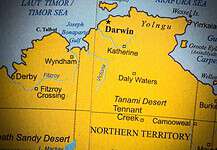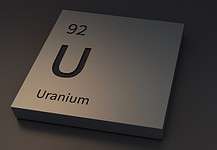Despite current investor uncertainty towards the gold industry, Newmont is a company name increasingly synonymous with confidence. Maintaining an impressive portfolio of assets globally, the company sustains its security as a primary gold producer across four continents, with operations across the US, Australia, Peru, Indonesia, Ghana, New Zealand and Mexico.
Founded in 1921 and publicly traded since 1925, Newmont is one of the world’s largest gold producers and is the only gold company included in the S&P 500 Index and Fortune 500. With headquarters near Denver, Colorado, the company has about 40,000 employees and contractors worldwide.
The Australian division is controlled by subsidiary Newmont Mining Asia Pacific, and has become the company’s largest asset in the last decade. Its newest and arguably most highly regarded project, Boddington gold mine, provides a substantial contribution to the company’s sound numbers.
History of Boddington
Boddington is a large open-cut operation 130km southeast of Perth, bordering the Saddleback Greenstone Belt in WA’s famously mineral-rich south-western Yilgarn Craton. The Boddington resource was discovered in 1980 by scientists testing the area’s alumina samples as part of project planning for the Worsley Alumina joint venture. In preliminary testing, 33 of 37 samples contained measureable gold. Following further sampling, the initial resource was defined, totalling 42 million tonnes of ore averaging 1.7g (0.06oz) of gold per tonne.
Mining began in 1987 under the management of the Worsley Joint Venture, with the mine maintaining status as Australia’s largest gold mine between 1989 and 1991. During its first lifespan, 105mt of ore was processed, producing 4.74 million ounces of gold and more than 6500t of copper. After all known oxide ore resources had been processed the mine was closed, officially ceasing operation on 30 November 2001.
Boddington then remained a dormant asset of Normandy Mining, which held 44.44 per cent ownership with partners Acacia Resources (33.33 per cent ownership) and Newcrest Mining (22.23 per cent ownership). Newmont Asia Pacific gained ownership of the mine in stages, attaining its first shares in 2002 via its acquisition of Normandy. Around this time, AngloGold gained the Acacia share.
In 2006, Newmont further added to its Boddington portfolio, after Newcrest sold its interest in the mine for $225 million.
Boddington’s second life
Movement for a second revival of the Boddington resource began in 2006, with the approval of the Boddington Expansion Project.
Three years later, on 29 January 2009, Newmont announced it had raised $1.5 billion to acquire AngloGold’s 33 per cent share in the mine, enabling the company to gain full ownership. Newmont reopened the mine in July that year, after major expansion works were completed to allow Boddington to again become one of Australia’s largest gold mines.
Built on the footprint of the original Boddington mine, the operation expansion involved open cut mining from two large open pits, named north and south Wandoo. First gold was poured from the new pits on 29 August 2009.
Since its re-opening, Boddington has achieved sound production, with the mine producing 728,000oz of gold and 58 million pounds of copper in 2010. The mine hit the 1 million ounce mark just 18 months later, in March 2011. Across 2011, the second full year of production, Boddington Gold increased delivery to 741,000oz of gold and 69 million pounds of copper. At year-end, Boddington Gold had proven and probable reserves of 19.5moz of gold and 2.26mlb of copper, with an anticipated life of more than 24 years, based on an average annual gold production of between 750,000oz and 800,000oz a year.
Newmont demonstrated its confidence in the project, increasing its total capital investment in the project to US$217.7 million.
Innovation and expansion breathe new life into Boddington gold
Advertisement








































